- Culture & Lifestyle

- Madhesh Province
- Lumbini Province
- Bagmati Province
- National Security
- Koshi Province
- Gandaki Province
- Karnali Province
- Sudurpaschim Province
- International Sports
- Brunch with the Post
- Life & Style
- Entertainment
- Investigations
- Climate & Environment
- Science & Technology
- Visual Stories
- Crosswords & Sudoku
- Corrections
- Letters to the Editor
- Today's ePaper

Without Fear or Favour UNWIND IN STYLE

What's News :
- Qatari emir’s Nepal visit
- Fire season woes
- Provincial governments row
- Gaur massacre
- Ride-hailing companies
Hopes of tourism revival with new travel rules in place
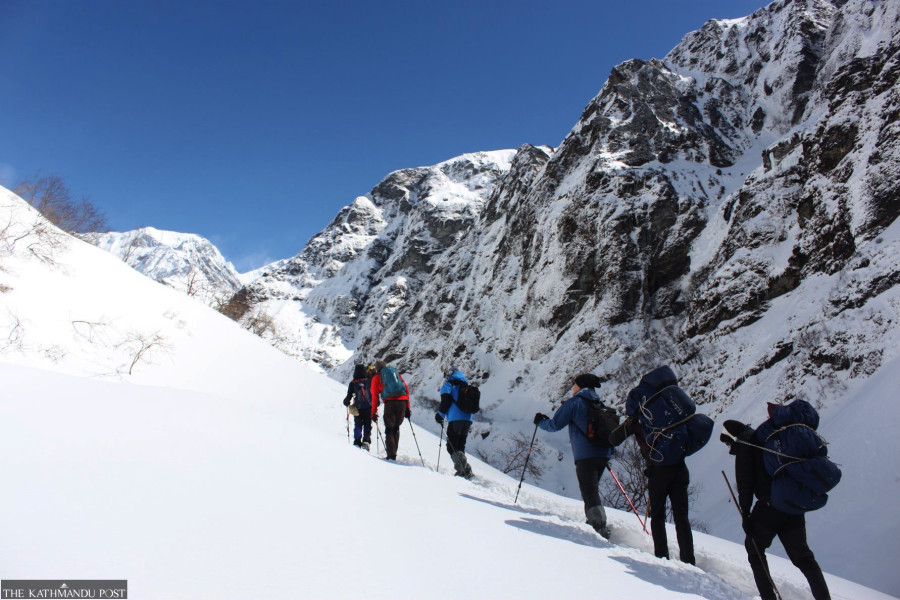
Sangam Prasain
Nepal on Thursday threw away the seven-day quarantine requirement and resumed issuing on-arrival visas to all vaccinated foreign travellers in a bid to bring its virus-ravaged tourism industry back to life.
Visitors should have received their last dose of Covid-19 vaccine at least 14 full days prior to entering Nepal. Those who are not vaccinated or partially vaccinated will not get on-arrival visas. They have to get their entry permits from Nepali diplomatic missions, and also spend 10 days in quarantine in government-listed hotels.
A negative RT-PCR or Gene Expert or True NAAT test is required for all to travel to Nepal, according to a new travel protocol issued on Thursday . All travellers need to undergo mandatory antigen or rapid antigen tests at immigration entry points.
The new protocol was issued under the Infectious Disease Act (1964 ), after the Covid-19 Crisis Management Ordinance (2020 ), along with around a dozen ordinances, introduced by the government, became ineffective from September 16 when they failed to get through Parliament within the constitutional deadline.
After the Covid-19 Crisis Management Ordinance failed to get parliamentary approval, all legal frameworks related to travel also became invalid.
On Monday, the Cabinet approved the new travel protocol under the old Infectious Disease Act.
“We have approved the removal of the quarantine requirement for all vaccinated travellers arriving in Nepal from all international destinations and updated the travel procedures effective from Thursday, September 23,” Taranath Adhikari, spokesperson for the Tourism Ministry, told the Post. “The measures are expected to boost the country’s tourism industry.”
Before boarding a flight to Nepal, all vaccinated travellers will have to present a negative Covid-19 test result taken 72 hours prior to the departure, and fill up the international travellers’ online form at www.ccmc.gov.np and have a printed copy to apply for on-arrival visa at the airport, according to the travel protocol published by the Tourism Ministry on Thursday.
If they test positive, they will be sent to an isolation centre or hospital recommended by the Health Ministry. According to the new rules, if there is no antigen testing facility at the airport or immigration point, foreigners have to undergo the test at the hotel. They will be allowed to leave the hotel if the test comes back negative.
“Unvaccinated or partially vaccinated tourists have to mandatorily quarantine themselves at the hotel for 10 days at their own expense. On the 11th day, if they test negative, they are free to travel,” according to the new rule.
All expenses for testing for Covid-19, isolation and insurance should be borne by the travellers themselves. Travel and trekking agencies are responsible for enforcing all conditions set by the new rule.
Hotels will be responsible for implementing quarantine and isolation.
If visitors don't abide by the rules, the hotel should inform the police or other agencies concerned, according to the rule.
“Though a delayed decision, it is a huge boost for the country’s tourism industry,” said Khum Bahadur Subedi, president of the Trekking Agencies Association of Nepal . “We expect a partial recovery in arrivals this autumn, the country’s peak tourism season. There are high hopes for a full spring season recovery if there are no threats of a Covid-19 resurgence.”
Travel trade entrepreneurs say that inquiries from potential visitors to Nepal have been massive, and they were eagerly waiting for Nepal’s decision to ease quarantine requirements and visa issuance.
Travel and tourism businesses, which accounted for around 8 percent of the country's gross domestic product and provided more than 1.05 million jobs directly and indirectly in pre-Covid-19 times, were the hardest hit after travel restrictions came into force in late March last year.
Last spring, the government reopened the country to foreign travellers in the hope of lifting the economy and employment by reviving tourism.
Subsequently, Nepal received a record-high number of foreigners aspiring to climb the world’s tallest peak, Mt Everest, as the Covid-19 pandemic appeared to peter out. But fresh Delta outbreaks and slow vaccine rollout again cast a pall on the country's tourism.
After the second Covid-19 wave hit Nepal in April, the country slid into a devastating crisis with the authorities enforcing strict lockdown measures . About two months later, the restrictions were relaxed gradually, and since September 1, almost everything has been allowed to reopen.
Daily coronavirus infections have also fallen sharply from a high of 9,317 on May 11, 2021, to 1,239 on Thursday. Restrictions on businesses have been eased, and encouraging signs of an economic revival are emerging even as concerns persist about renewed outbreaks.
On Wednesday, the Asian Development Bank revised down its forecast for Nepal’s economic growth in the current fiscal year 2021-22 to 4.1 percent from the previous 5.1 percent, largely due to high Covid-19 cases and risks, though reduced now, and slowed growth in tourism and services.
Tourism-dependent Nepal hosted 230,085 foreign tourists in 2020 , a drop of more than 80 percent compared to 2019 and a figure similar to that of 1986. As of August, total international arrivals to Nepal had numbered just 66,966 individuals.
According to the new rule, on-arrival visas have been resumed for non-resident Nepalis or foreigners who are married to Nepali citizens too. If they are fully vaccinated, receiving the last dose at least 14 full days prior to the day they enter Nepal, they are allowed to proceed to their respective destinations.
If they are not fully vaccinated or have not had the last dose at least 14 full days prior to the day they enter Nepal, they will be allowed to continue to their respective destinations if their antigen test comes back negative.
According to the rules, people returning to Nepal for mourning rituals following the death of their loved ones will be allowed to go to their destinations if their antigen test comes back negative, based on the recommendation of the local government.
Similarly, persons suffering from having illnesses or disabilities and their carers, are allowed to go to their homes directly if their antigen test comes back negative, based on hospital documents and the recommendation of the local government.
People aged above 75, their carers and children below five and their carers are allowed to go home following a negative antigen test at the airport, based on the recommendation of the local government.
Representatives of diplomatic agencies and their family members have to submit a negative Covid-19 test result taken within 72 hours of departure. The online form at www.ccmc.gov.np for their on-arrival visa is mandatory for them as well.
Those who have secured a visa at Nepal's diplomatic missions abroad have to submit a negative Covid-19 report and fill up the form and submit it at the immigration point. If they don't have Covid-19 symptoms after their arrival in Nepal, they will be allowed to go to their destination.
Official representatives of diplomatic missions in Nepal, if they are not vaccinated, should quarantine themselves for 10 days at a place recommended by their agency.
The government has also opened land entry points for all tourists, including Indian travellers.
Travellers entering Nepal through surface routes have to fill up the arrival form and undergo antigen tests. A negative report will allow them to enter Nepal. Except Indians who do not require visas, other visitors should obtain visas from the Nepali diplomatic mission in their respective countries.
According to the new rules, if the immigration points do not have facilities to conduct antigen tests, they need to do it at the hotel.
Similarly, fully vaccinated foreigners transiting to third countries through Kathmandu’s airport, after a short stay in Nepal, have to submit a negative test report 48 hours prior to their departure.
The rules say that children below five years of age do not require vaccines and tests. For children between five and 18 years of age, vaccination is not mandatory.
Passengers departing from Nepal have to submit a negative Covid-19 test report taken less than 48 hours before departure or as per the rules of the countries they are travelling to.
With cases declining and almost everything opening up, tourism entrepreneurs for quite a while had been mounting pressure on the government to lift the travel ban.
Deepak Raj Joshi, former chief executive officer of Nepal Tourism Board, said the new rules are better late than never.
“Delays in government approval have caused headaches for scores of prospective travellers, who made their plan to visit Nepal in autumn, but had to cancel due to quarantine requirements,” Joshi told the Post. “The government should have made this decision a month earlier. Nonetheless, the decision has been made and this will be a big boost to the tourism industry as it emerges from this pandemic."
Sangam Prasain Sangam Prasain is Business Editor at The Kathmandu Post, covering tourism, agriculture, mountaineering, aviation, infrastructure and other economic affairs. He joined The Kathmandu Post in October 2009.
Related News

Nepali envoy to Italy Subedi presents credentials

Deals signed with Qatar, but no major breakthrough

Nepali, Tamang, Nepal Bhasha official languages of Bagmati

House lifts suspension on Congress lawmaker Gurung

Portfolios assigned to seven Lumbini ministers
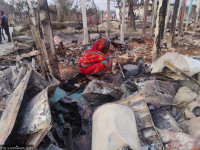
Fire destroys 110 homes in Mahottari
Most read from national.
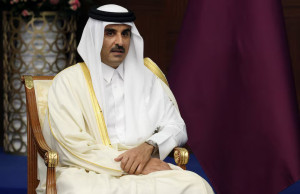
Five MoUs to be signed during Qatar emir’s visit

Qatari Emir Al-Thani arriving on two-day Nepal visit
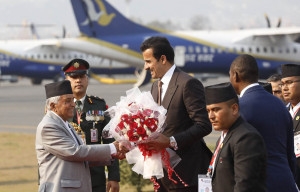
Qatar’s Emir Al-Thani arrives in Kathmandu on two-day visit

Turkey implements new rule for Nepali passport holders

Beijing’s message: Won’t tolerate anti-China activities in Nepal
Editor's picks.
.jpg&w=300&height=200)
Nepal sets sight on multi-billion dollar LGBTIQ tourism market
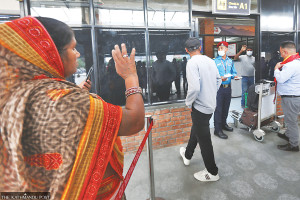
Escalating Middle East crisis threatens Nepali economy

Laws on marital rape still murky in Nepal
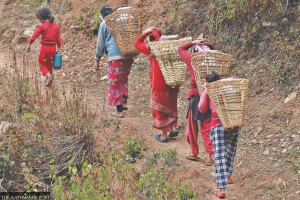
As springs dry up, water shortage deepens in high altitude villages of Mallarani in Pyuthan
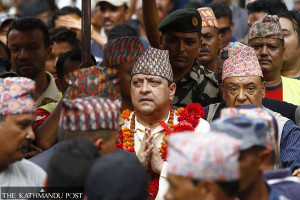
Melodrama for monarchy
E-paper | april 25, 2024.
- Read ePaper Online
_aot6ibdl5ccwoqgtalzzjn1ntom49f50fmiaq1qpaabzozeqtm65dpbpqqda.png)
Ministry amending the Tourism Act
Tourism Mail
Aug 31, 2023
KATHMANDU, August 31:Minister of Culture, Tourism and Civil Aviation, Sudan Kirati, has said that they are preparing to amend the Tourism Act.
On Monday, he stated that plans are being made to change the Tourism Act 2035 while speaking at a session of the Nepal Mountaineering Association.
The current law, according to Minister Kirati, does not cover all facets of tourism, and the ministry is working to modify it. Additionally, he stated that numerous laws and rules in Nepal need to be updated throughout time.
He stated that the failure to meet the goal was due to the inability of the law to be changed in light of the political shift. Despite the fact that the nation has been a republic for a very long time, he claimed that several rules and regulations are still in effect today despite though they were created during the monarchy.
In 2035, the Tourism Act was passed. The Act is still being put into practice. The Act was passed in 1974. According to Minister Kirati, a modification to the Act is necessary.
"The republic was brought by us. We are still using monarchy-era methods to achieve the republic's objectives, nevertheless. We have outdated laws, he remarked. The Tourism Act is effective as of 2035. It must be written. The period of drafting the Tourism Act has begun.
According to him, comments and recommendations have been sought regarding the Act's need for revision. He added that talks with the ministry's secretary are still ongoing. He argued that laws should be written to reflect the requirements of the day.
"We have obtained approval from the Council of Ministers and have given one month's notice to any groups and individuals who may have concerns in order to solicit their views. A tourism act that can accommodate all parties and comprehend the demands of the present is required. That is why we are moving in that direction.
Related News
Half a decade of deligh: kathmandu mariott hotel celebrates…, govt urged to request agreement on direct flights from bhai…, hotel yak and yeti "cultivating connections", trending news, rhododendron blossoming in tmj (photo feature), dough delights: chef pasqualino barbasso arrives to celebrate marriott kathmandu's 5th anniversary, nirmal purja sets new record in climbing mountains higher than 8,000 meters 44 times, nepal sbi bank to issue nepal sbi debenture-2090, annapurna region receives 144k foreign tourists in nine months of current fy, laxmi sunrise bank publishes carbon emission report for fy 2079/80 bs, half a decade of deligh: kathmandu mariott hotel celebrates 5th anniversary, govt urged to request agreement on direct flights from bhairahawa to qatar, balaju baisdhara mela (photo feature), manaslu avalanche: home ministry urges people near budhigandaki to remain vigilant, massive avalanche in manaslu peak, 16 candidates shortlisted for ceo of ntb, popular news, govt urged to request agreement on direct flights from bhairahawa to qat…, half a decade of deligh: kathmandu mariott hotel celebrates 5th annivers….
- GET INVOLVED
Post-COVID Tourism Recovery: Can nature-based tourism power Nepal’s green recovery

Tourism is a mainstay of Nepalese economy and one of the priority sectors for the Government of Nepal. While the prospects of growth of Nepal’s tourism sector is huge, the sector is already facing several challenges, such as adverse impact on the environment, growing demand for world-class infrastructure, waste management, imparting and maintaining proper sanitation and adequate tourism linkages with rural areas to ensure equitable distribution of tourism dividend for the economic benefits for the host communities.
Tourism in Nepal remains the top-notch development option for the government and the private sector. It hinges mainly on two pillars: preservation and conservation of biodiversity and improving the living conditions of rural communities, eventually bringing in equal distribution of tourism benefits to all levels of society that is paramount for sustainable tourism development.
Tourism is one of the most thriving industries in Nepal. The snow-capped mountains, a rich diversity of cultures, scenic places, rivers, lakes, flora and fauna, historical monuments, bilingual and hospitable people are the main attractions for the foreign visitors. Nepal has immense diversity in natural and socio-cultural aspects. Endowed with such pristine natural treasures, Nepal has both comparative and competitive advantages to attract tourists in search of authentic new experiences and those seeking to escape to nature, which significantly is more pronounced during the time of COVID-19.
Nature-based tourism
Although it is very early to predict the direction of tourism in post-COVID era, health and hygiene protocol and safety would be the prime concern of the visitors. Several tourism experts and destination managers have pointed out that the nature-based destination would be the first and comparatively resilient to recover. Although nature-based tourism has been prioritizing the community, conservation and knowledge sharing as the major form of the ecotourism principle, nature-based tourism on new normal needs to be streamlined by a green and sustainable recovery approach. Global Guidelines developed by UNWTO to Restart Tourism has prioritized the vision of development and implementation of recovery plans which contribute to the Sustainable Development Goals (SDGs) which recommends lines of action to guide a responsible tourism recovery for people, planet and prosperity, namely public health, social inclusion, biodiversity conservation, climate action, circular economy and governance and finance. Nepal being a pioneer in ecotourism and majority of visitors approaching nature-based destinations, the green recovery concept seems relevant and applicable for sustainable revival approach. Different components of sustainable recovery such as Sustainable Transportation, Renewable energy use and energy efficiency, use of local foods and resources should be implemented in destination level well facilitated through policy endorsement. Still Nepal lacks a policy guideline for ecotourism and this can be an absolute opportunity to endorse ecotourism policy of Nepal.
Policy, plans and programmes
Policy and plan level intervention in the tourism sector can be traced back in 1972, after the development of the First Tourism Master Plan which had recommended the concept of foreign currency earning through employment and income generation through development of tourism activities. Likewise, Tourism Act 2035 was promulgated in 1978, immediately after establishment of the Tourism Ministry in 1976, as the major recommendation of the Tourism Master plan. Hereinafter, several policy development milestones were initiated in Nepal. Development of Tourism Policy 2052 in 1995 prioritized the role of the private sector together with highlighting the concept of Rural Tourism.
Green recovery strategies are more effective only when we first address community development issues. The involvement of local stakeholders has been emphasized as one of the significant aspects towards sustainable tourism development. Nepal has rich experiences in various community development programmes.
Nepal has a solid experience of promoting tourism as a means for poverty alleviation in the mainstream development policy. In 2001 a pilot program called Tourism for Rural Poverty Alleviation Program (TRPAP) was launched in six districts of Nepal with the goal of reducing rural poverty through the development, promotion and marketing of new tourism models in the program district; and institutionalizing tourism in local self-governance systems through developing appropriate institution and policy. TRPAP worked in both top-down and bottom-up approach: policy, plan and budgets were designed by a steering committee while programmes were devised at community level and executed by local level. The institutional modality was unique in its approach that clearly lived to the spirit of inclusion where community was fully empowered. This way, by venturing into rural areas, the programme was able to connect with and encourage local people to contribute to their own community in particular and the country in general. Local communities were empowered in decision making. TRPAP encouraged community-based tourism. Today, Nepal's empowered communities have transformed the traditional community-based tourism to community-driven tourism. Having economically benefited through tourism, rural communities have taken priority over resource conservation, eventually benefitting environment. Moreover, there are numerous examples of the community-led tourism projects having multiplier effects. Tourism has acted as an impetus to large transformations. The stakeholders have set examples of leading in conservation as well. For instance: the communities of different buffer zones of Bardiya National Park and Chitwan National Park have not only made the areas favorite destinations but have also made the country the only country in the world to nearly double the tiger counts. With environment friendly tourism, our different destinations and programs have proved that such projects have benefited the community financially, country economically and the whole globe environmentally.
Lots of work has been done in shaping tourism planning and development for responsible and meaningful tourism development in Nepal. Carefully designed and well-planned strategies are essential for overall tourism development. The notion of community involvement in tourism is fraught with difficulties in developing countries such as Nepal, as it requires strong institutional and socio-economic set up. There was a paradigm shift in the Eighth Plan (1992-97) and the Ninth Plan (1997-2002) as rural tourism got emphasis in the Five-Year plan. Finally, rural tourism development was featured in Tourism Policy 2065 (2008) to provide the impetus for the development. Homestay tourism took its shape and was finally recognized by the Government of Nepal with promulgation of Homestay Operating Procedure 2010. With the advent of the Procedure in 2010, Nepal saw profusion of homestays across the country with Ghale Gaon Homestay (Lamjung), Amaltari Homestay (Nawalparasi, Chitwan National Park), Lwang Ghalel Homestay (Kaski), Khata Jaibik Marga Homestay Dalla (Bardiya) etc.
Further in 2009, maximizing the priority in the tourism sector, a new rectified tourism policy was developed highlighting the community participation, expansion and diversification of rural tourism, destination development and diversification, and so on prioritizing the engagement of the private sector in tourism. Meanwhile on 1999, Nepal Tourism Board was established as per the Nepal Tourism Board Act, which carries the spirit of public-private partnership modality and serves as a strategic think-tank Evaluating the progress and impacts of Strategic document such as Tourism Vision 2020 and Nepal Tourism Strategic Plan 2016-2025, streamlined implementation uniformity has been realized. Given the changed socio-political and economic context, the policy directives reflected by the Constitution of Nepal, our own commitment under the Sustainable Development Goals and several natural and anthropogenic situations faced by the industry, a new contextual policy has been realized by the entire tourism fraternity.
Health and hygiene protocol
Consumer behaviors have changed since the outbreak of COVID-19 and are preferring from short haul to long haul and are preferring destinations which are away from the hustle bustle of cities, offering off-beat travel delivering a safe and hygienic experience to visitors giving overall immersive experience of people, place and culture. In this regard, NTB along with the Ministry of Culture, Tourism and Civil Aviation (MoCTCA) released 'Operational Guideline with Health Protocol for Tourism Sector' for the Tourism Industry to minimize risk for both consumers and providers of tourism services. Further, NTB in collaboration with concerned tourism organizations conducted online training for tourism entrepreneurs focusing on imparting safety, security and hygiene of Nepal as a destination.
Way forward: Green tourism strategies
In the post COVID-19 scenario, the very survival of the tourism industry had become the biggest challenge, particularly because there was no specific preparedness strategy in case of any crisis of this scale. This gap is something that we need to pay heed to. Secondly, the concept of Restart, Revive and Rethink can be streamlined for sustaining and streaming tourism in new normal. Development of health and hygiene protocol and strong monitoring together with effective tourism guidelines can give immediate direction to restart. Similarly, a public private collaborative approach for tourism resilient building and preparedness for future possible crisis management should be the prime concern of the sensitive tourism industry. Accordingly, investment on nature-based solutions can have potentials to drive innovation in tourism mitigating the environmental impact in tourism activities and development interventions, which ultimately results into sustainable natural resource management and conservation. Also, contribution of the value of revenue generated as an ecotourism service at destination level could enable the tourism sector to capitalize ultimately to enable sustainable recovery. Moreover, a transformational stage can be envisioned in the post Covid-19 era, where destination management organizations and policy makers can lead this crisis as an opportunity to rethink the future course of sustainable tourism.
Covid-19 has forced people all over the world to escape and reconnect with nature. They are more attracted to green ways of living, which can offset their carbon footprint. It is highly recommended to enact a green recovery policy based on “tested experiments” or “proven approaches” as Nepal has rich experiences in sustainable tourism development. There are tremendous windows of opportunity to implement strong measures ensuring the green recovery activities both at local and regional level.
Nepal –Reason for All Seasons
Travellers will be looking for secluded places of incredible natural beauty. In this regard, Nepal has initiated to develop Hill-Stations. This has two-fold approaches. Firstly, it will add on to new products and will showcase to travelers. Secondly, it will address the major issue that Nepal is currently facing – a destination for a limited period. Nepal needs to change itself from a destination for a limited season to a destination that is Reason for All Seasons. This will not only help to change the brand image of Nepal that is perceived as a country for mountaineering and trekking, but will also help to provide immersive experiences that are based on nature-based tourism engaging with locals and taking in new experiences.
Nepal is focusing on betterment of local people as well. Local ecology, culture, creating linkages between vocational skills training and tourism has been the prime focus since the last two decades. A fine balance between guest and host have well-taken care of giving prominence to local ecology and culture. Local bodies and authorities are not unnecessary catering to tourist demands. Overall, tourism must enhance local life instead of hampering it. In post-COVID-19 tourism, travelers will embark on a journey to an exotic location; will seek out the less crowded places. Visitors will be preferring destinations which are away from the hustle bustle of cities.
Unique geographical and geological positioning of Nepal has been a boon for Nepal’s natural and socio-cultural diversity. Terai, the lower plains in the southern parts has immense potentiality in cultural and nature-based tourism with maximum market potential for cross-border Indian tourist specially for religious purpose, entertainments, VFR (Visiting Friends and Relatives) and Terai based protected Areas like Sukhlaphanta NP, Bardiya, Chitwan and Koshi Tappu Wildlife Conservation Area. Similarly, mid-hills have absolute potentiality with numerous hill stations and cultural trails connected with socio-cultural and landscape diversity, Integrated Farming System and Terraces with all season tourism attractions. Himalayas as the water tower of Asia, matters to be the lifetime experiences for the global tourism enthusiast, with world-class trekking trails, mountaineering options and numerous hard and soft adventure activities.
A critical point concerning the social sustainability is the induced effects of tourism Induced effects reflect the trickle-down benefits to local community, and people whose livelihoods are related with incomes from the informal sector. Efforts are made to take care of induced effects as it is an essential factor to be considered for green recovery in tourism. Mid-Hills in Nepal have potential to generate induced effects that can boost livelihoods of local people.
With bountiful magical beauty, mid-hills in Nepal offer tremendous potentialities. Mid-Hills in Nepal are culturally rich and feasible for all seasons both for domestic and international tourists. Climate and accessibility wise Mid-Hill regions in Nepal are well-suited for travelling and livelihoods as this falls under 2000 m. In most of the years, the regions are mostly sunny, with breathtaking landscapes, views and greenery in the surrounding areas. Yoga, meditation, organic foods, agro-tourism, wilderness, local people and culture are some of the potential activities that can be introduced in mid-hills regions.
About the authors
Dr. Siddhartha B. Bajracharya is executive director of the National Trust for Nature Conservation and Dr. Dhanjaya Regmi is chief executive officer of the Nepal Tourism Board.
- About ECOLEX
- User Agreement
- Acknowledgments
- Take a tour
Nepal Tourism Board Act, 2053 (1997).
This Act provides for the establishment of the Nepal Tourism Board to develop, expand and promote tourism business in Nepal whilst protecting and promoting natural and cultural heritage and the environment of the country.
References - Legislation
Nepal tourism board rules, 2055 (1999)..
Keyword: Tourism, Institution, Cultural heritage
Source: FAO, FAOLEX
Delete record "Nepal Tourism Board Act, 2053 (1997)."
- पुरानो साईट
- पर्वतारोहण परमिट प्रणाली
- होटल दर्ता व्यवस्थापन प्रणाली
- कर्मचारी - एकीकृत इमेल
- Mountain Guide License
- फारम डाउनलोड
- PEAK PROFILE NEPAL

नेपाल सरकार
संस्कृति पर्यटन तथा नागरिक उड्डयन मन्त्रालय, पर्यटन विभाग.
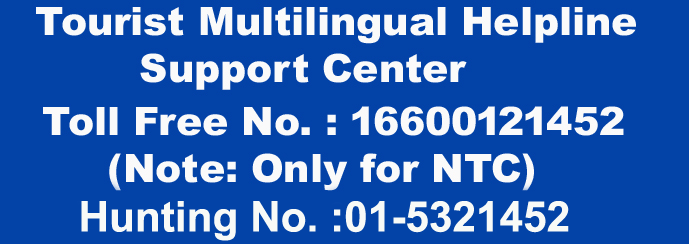
कार्यविधीहरु
निर्देशिकाहरु, सम्बन्धित लिंक्स.
नेपाल सरकारको आधिकारिक पोर्टल
प्रधानमन्त्री तथा मन्त्रिपरिषद्को कार्यालय
संस्कृति, पर्यटन तथा नागरिक उड्डयन मन्त्रालय
अर्थ मन्त्रालय
सङ्घीय मामिला तथा सा.प्र मन्त्रालय
विधुतीय खरिद प्रणाली
Ministry of Culture,Tourism & Civil Aviation,Nepal
सम्पर्क विवरण

25th Apr 24 05:42:27
2020 All Rights Reserved Terms of Use and Privacy Policy
Nepal Tourism Board Act, 2053 (1997).
Attractions
Unesco world heritage sites, protected areas, eight thousanders, pilgrimage sites.
- Bungee Jumping
- Motor Biking
- Rafting & Kayaking
- Mountain Biking
- Paragliding
- Cave Exploration
- Bird Watching
- Mountain Viewing
- Jungle Discovery
- Butterfly Watching
- Nagarkot Sunrise and Sunset
- Traditional Crafts
- Meet the People
- Village Tours
- Food & Culinary
- Cultural Tours
- Heritage Walk
- Museum Tours
- Faith Healing
- Panchakarma Treatment
- Sound Meditation
- Natural Hot Water Springs in Nepal
- Pilgrimage Tours
- Destination Wedding
- Indra Jatra
- Chhat Parva
- Event Calendar
- Festival Highlights
- Travel with children
- Ganesh Himal Trek
- Chandragiri - Chitlang - Kulekhani
- Pilgrimage to Doleshwar mahadev Temple
About Nepal
Travel details.
- Tourist Visa
- Local Transportation
- Trekking Permit
- Park Entry Fees
- Heritage Site Entry Fees
- Tourist Police
- Safety in the Mountains
Book Your Trip
- Book Experience
- Travel Updates
- Kathmandu Valley
- Mount Everest
-1624804990.jpg?p=main&s=564af9c2abab3e00270c73d35cf727cc)
Browse Highlights Through Map
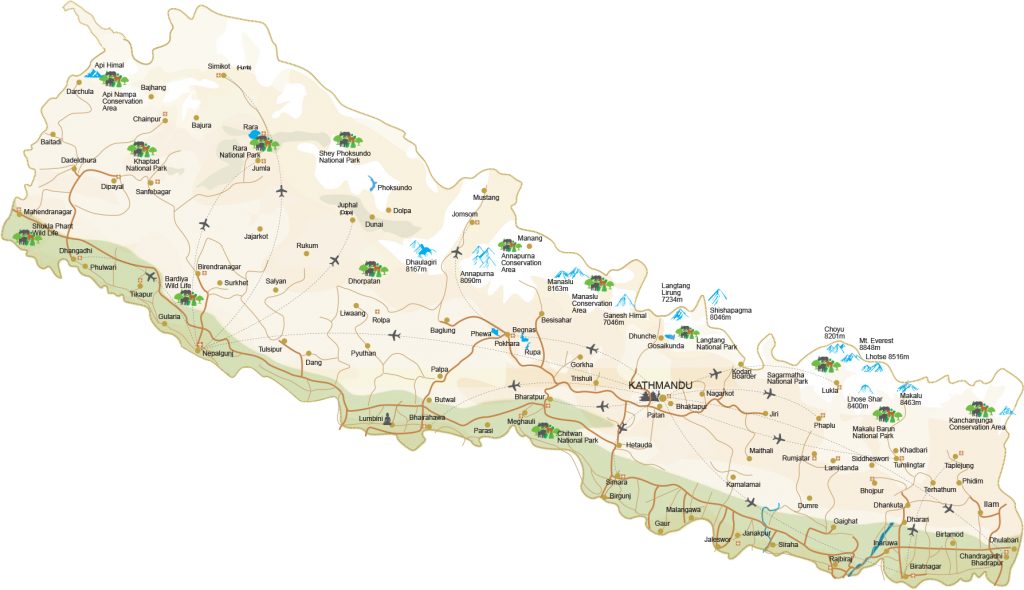
Annapurna I

Nepal Tourism Board is a national tourism organization of Nepal established in 1998 by an Act of Parliament in the form of partnership between the Government of Nepal and private sector tourism industry to develop and market Nepal as an attractive tourist destination. The Board provides platform for vision-drawn leadership for Nepal’s tourism sector by integrating Government commitment with the dynamism of private sector.

Nepal Tourism Board
Other sites.
- Tenders & Trade
- Photo Nepal
Feedback Form
Legal Advisors
Lawyers, Legal Advisors, Law Firm, Nepal
Nepal Tourism Board Rules, 2055 (1999)
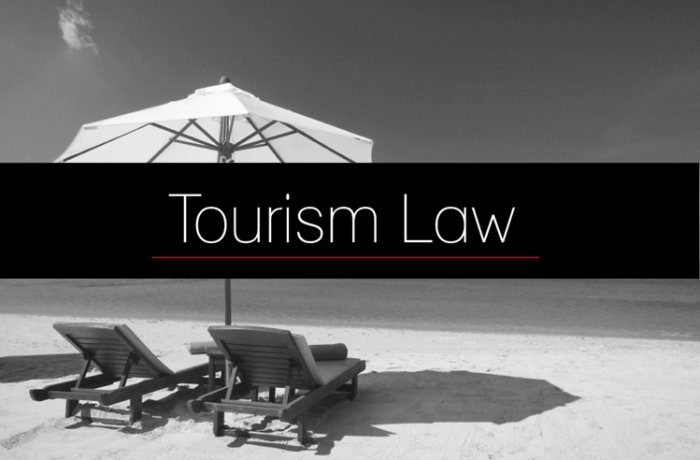
By exercising the Power conferred on it by Sub-section (1) of Section 25 of the Nepal Tourism Board Act, 2053 (1997), Nepal Tourism Board has made the following Rules with the approval of Government of Nepal:
Chapter 1: Preliminary
1. Short Title and Commencement:
(1) These Rules may be called the “Nepal Tourism Board Rules, 2055(1999)” (2) These Rules shall come into force immediately.
2. Definition: unless the subject or context otherwise requires, in these Rules,
(a) “Act” means the Nepal Tourism Board Act, 2053(1997).”Tourism entrepreneurs” means a person, firm, company or an organization who operates on tourism business.
(b)”Service fee” means the service fee that the Board is entitled to receive from the tourist and tourism entrepreneurs as per Rules.
Chapter 2: Provision Relating to Service Fee
3. Service Fee: The Board may receive the following service fee from the tourist and tourism entrepreneurs pursuant to Section 7 of Act:-
(a) Service fee as determined by the committee for the service to be rendered to the tourist by the Board.
(b) Service fee of Two percent over the total amount paid by each tourist to the tourism entrepreneurs who operated the tourism business as prescribed by the committee.
(c) If the Board has provided special consultation or service to any tourist or tourism entrepreneur, service fee as determined by the committee for providing.
4. Collection of Service Fee: The Board may collect service fee from a tourist and tourism entrepreneur for providing direct or indirect consultation or service. Provided that, the Board may specify particular service fee may not be changed for any consultation or service.
5. Representative may be appointed to collect the Service Fee:
(1) The Board may appoint a tourism entrepreneur or any other person or body, its representative to collect the service fee, or to collect service fee through any other method.
(2) If the committee considers it necessary, the Board may collect fee from a tourist directly, as per the procedure prescribed by the committee.
6. To Deposit in Fund:
(1) The responsibility and liability of depositing the amount of service fee collected from a tourist into Board’s fund shall be that of the concerned tourism entrepreneur or person or body authorized by the Board.
(2) Where the Board appoints a tourism entrepreneur as a its representative to collect service fee pursuant to Sub-rule (1) of Rule 5, such tourism entrepreneur shall have to deposit the amount to be paid by itself to the Board it’s while depositing the amount of service fee collected into the Board’s fund pursuant to Sub-rule (1).
(3) A tourism entrepreneur or any other person or body appointed by the Board as its representative to collect the service fee pursuant to Rule 5 shall after having deposited the amount into the Board’s fund, give a notice in writing thereo to the Board.
(4) Except otherwise provided in Sub-rule (1) and (2) the other procedure relating to collecting service fee from tourist or tourism entrepreneur and depositing such amount into fund of the Board shall be as prescribed by the Committee.
7. Action to be taken Against Defaulters:
(1) Where the tourism entrepreneur or any other person or body, having the duty to collect and deposit service fee, fails to collect or to deposit into Board’s fund even after collecting, the Board may take necessary action to recover amount for service fee from such tourism entrepreneur or any person or body.
(2) The Board may request to the concerned authority of Government of Nepal to suspend or cancel the license of such tourism entrepreneur, if tourism entrepreneur fails to deposit into the Board’s fund.
(3) Where a request is made pursuant to Sub-rule (2), the concerned authority of Government of Nepal shall cause to the concerned tourism entrepreneur to pay the amount of loss caused to the Board and if such tourism entrepreneur does not pay the loss amount, Government of Nepal may suspend or cancel the license for a specified period of such tourism entrepreneur.
(4) The Board may recover reasonable reparation from the concerned tourism entrepreneur, for a loss caused to the Board.
Chapter 3: Provision Relating to the Chief Executive Officer
8. Procedure for Selection of Chief Executive Officer:
(1) The committee shall form a Three–member Sub-committee, from among the members nominated pursuant to Clause (g) of Sub-section (2) of Section 9 of the Act to select and recommend the appropriate candidate for the appointment to the Chief Executive Officer.
(2) The Sub-committee constituted pursuant to Sub-rule (1) shall publicly call application; prepare a list of persons desiring the qualification as mentioned in Section 14 of the Act and recommend the name of three candidates to the committee for the appointment to the post of Chief Executive Officer from among persons enlisted in such list with specially qualified, trained and experienced in tourism field.
9. Appointment of Chief Executive Officer:
(1) The Committee shall appoint the Chief Executive Officer of the Board from among those persons recommended to committee pursuant to Sub-rule (2) of Rule 8 whom it considers appropriate.
(2) If the person so appointed, to the Post of Chief Executive Officer pursuant to Sub-rule (1), is being engaged in Governmental, non-Governmental service or any occupation, he/she shall retire from such service or occupation. If one does not retire such appointment shall be ipso facto void.
10. Remuneration, Facility and conditions of Service of the Chief Executive Officer: The remuneration, facility and other terms and conditions of service of the Chief Executive Officer shall be as prescribed in By-laws.
11. Assessment of the Chief Executive Officer’s Work Performance:
(1) The committee shall evaluate work performance of the Chief Executive Officer every year. (2) The basis of the work performance evaluation to be made pursuant to Sub-rule (1) shall be as prescribed by the committee.
12. Procedure for Removal of Chief Executive Officer from the Posts:
(1) If the Chief Executive Officer fails to discharge duty pursuant to Sub-section (4) of Section 14 of Act, the committee shall constitute a Three-member inquiry Subcommittee consisting of a member of the committee as well to inquire that matter.
(2) The inquiry Sub-committee, under Sub-rule (1), in the course of inquiry may call Chief Executive Officer and other concerned persons to appear before the Sub-committee for necessary inquiry, to take statement and to collect necessary documents and evidence.
(3) After completion of inquiry, the inquiry Sub-committee shall submit its report along with its opinion to the committee.
(5) If the Committee considers the continuation of the duty of the post of the Chief Executive Officer may be in against of the interest of the Board, the committee may prevent from discharging duty or suspend such Chief Executive Officer until the inquiry is complete, after the Sub-committee to examine the allegation made against the Chief Executive Officer is formed pursuant to this Rule.
(6) In case, it is so proved that the loss was made to the Board knowingly by the Chief Executive Officer, the board shall initiate for necessary action to recover the loss made by such Chief Executive Officer.
13. Other Functions, Duties and Powers of the Chief Executive Officer: In addition to the functions, duties and powers set-forth is Section 15 of Act, the other functions, powers and duties of the Chief Executive Officer shall be as follows:
(a) To carryout financial, administrative and other functions as per the Act, these Rules and Bye-laws.
(c) To make or cause to make follow-up and evaluation necessary in the course of implementation of long term and short term of plan and programme approved by the Board.
(d) To prepare suggestion necessary to solve the policy oriented problem discovered in the course of implementation, follow-up and evaluation on plan and programme, pursuant to Clause (c).
(e) To prepare agenda for the meeting of the committee after consultation with the chairperson.
(g) To comply with or caused to be complied with direction given by the committee and the Chairperson.
(h)To protect and manage the movable and immovable property of the Board.
(i)To perform other functions and take actions as prescribed by the committee.
Chapter 4: Miscellaneous
14. Daily and Travel Allowances of the Chairperson, Vice-Chairperson and the Member of the Board:
(1) The Chairperson, Vice-Chairperson and the Members of the Board shall, while traveling within the country and abroad in connection of the Board’s programme, receive daily and travel allowance, clothing allowance and expenses, as prescribed in the By-laws.
(2) Notwithstanding anything contained in Sub-rule (1), members representing to the Board pursuant to clause (f) of Sub-section (2) of Section 9 of the Act shall not receive such allowance and expense.
15. Organization Chart and Division of Work of the Board: (1) The organization chart and work division of the work of the Board shall be as prescribed by the committee.
16. Official to Issue Administrative Order:
(1) The administrative order issuable under these Rules shall be issued by the Chief Executive Officer or an Officer level employee so authorized by the Chief Executive Officer.
(2) An Officer level employee of the Board shall have the power to certify the order issued pursuant to Sub-rule (1).
17. Record of the Decision to be Kept:
(1) The Member-secretary shall record the decision made in every meeting of the committee in minute-book and cause the signature or the members in it.
(2) A member, who is not satisfied with the decision of the Board made pursuant to Sub-rule (1), may sign in the minute book with separate remarks. Provided that, the member attending the meeting of the Board, shall receive travel allowance and Hotel Expenditure for a period of not more than Two days that is for approaching day and attending day. Such allowance and Hotel Expenditure shall be equal to received by the Chief Executive Officer pursuant to Financial Bye-laws, 2055 of the Nepal Tourism Board.
18. Copy of Decision to be Made Available: The Member-secretary shall make available of the decision of the committee to all members.
19. Annual Report to be submitted: The Chief Executive Officer shall submit an annual report pursuant to section 21 of the Act which shall also contain programme, cost, work progress and reform to be done in the future.
20. Oath: Other than the member representing Government of Nepal, the member, the Chief Executive Officer and every staff of the Board shall take the oath of office before taking charge of their post as mentioned in Schedule 1.
21. Inspection and Supervision: The committee may inspect and supervise and causeto be inspected and supervised Central, Branch and Sub-branch offices of the Board at any time as per necessity.
22. Handover: The Chairperson, vice-chairperson and members shall handover cash, kinds or other documents concerned with the Board within Seven days of their removal from the post, to the member-secretary or authorized officer and take the receipt.
23. Office Time of the Board: The office time of the Board shall be as prescribed by the Committee.
About The Author
Bidhan Giri
See author's posts
More Stories

Construction Business Rules, 2056(2000)

Income Tax Rules, 2059 (2002)

Zero rule of law in Nepal
Leave a reply cancel reply.
Your email address will not be published. Required fields are marked *
Save my name, email, and website in this browser for the next time I comment.
Academia.edu no longer supports Internet Explorer.
To browse Academia.edu and the wider internet faster and more securely, please take a few seconds to upgrade your browser .
Enter the email address you signed up with and we'll email you a reset link.
- We're Hiring!
- Help Center

NEPAL'S TOURISM AND HOSPITALITY: A Study on Scrutinizing the Opportunities and Challenges of Starting a Hospitality Business in Nepal

Global Academy of Tourism and Hospitality Education
The basis of this study was to break down the major opportunities/ possibilities as well as the challenges/ pitfalls that an entrepreneur should face while running a business in tourism and hospitality sector in the context of Nepal. This study will always be helpful for the established businesses to be aware of the different possible threats and consequences and for the emerging business ideas to cash the maximum out of the existing opportunities prevailing in the Nepali market. Hence, this research carried out at the ground level by taking the inputs from the Entrepreneurs and Businesspeople who are actually working with their projects, ventures and businesses in the hospitality sector could probably serve as a motivation and caution for the businesses by allowing them to take correct decisions in the future and preventing from the possible pitfalls and demotivating or frustrating situations. Keywords: Business, Challenges, Entrepreneurship, Hospitality, Law, Nepal, Opportunities, Pitfalls, Tourism.
Related Papers
The Gaze: Journal of Tourism and Hospitality
Niranjan Devkota
In the present context of Nepal, tourism is a new cultural expression and performance of national formation. Nepal is ready to deliberately utilize in a modern world as a means of creating a sense of identity and solidarity. The country has developed policies that directly influence and continue to shape tourism activities in Nepal. Despite plethora of literature available in Nepalese tourism sector still less has been paid attention on tourism entrepreneurial prospects and not much talked about regional and sectorial tourism prospects including Bardiya District, which is potential destination for national and international tourist for many causes. Thus, this study aims to identify tourism entrepreneurial prospects along with its challenges and potential recommendation for tourism entrepreneurial development in Bardiya District. This study is based on explanatory research design where local residents residing in Thakurbaba Municipality have been interviewed using structured question...
Janapriya Journal of Interdisciplinary Studies
bal ram Bhattarai
Change is inevitable in every sphere of human life; tourism activities are rapidly changing than other activities. The Nepalese tourism industry has also brought changes in different aspects, how those changes are perceived by the entrepreneurs of the industry is the main concern of the study. The primary objective of this study is to explore the dimensions of tourismmarket dynamics and entrepreneur’s readiness to cope with the perceived challenges. A qualitative framework has been adopted of an in-depth interview with leading entrepreneurial personalities of the tourism industry of Nepal. Representing hospitality, catering, trekking, and travel with at least 20 years of experience in tourism-related activities are considered as the true representation to collect primary data. Manual thematic content analysis has been employed to generate the theme of the interview. Major changes in customer expectation because of the market shift, technological advancement but not appropriate appli...
Ram Ghimire
Gurung gyan prasad
Journal of Hospitality and Tourism Insights
Udbodh Bhandari
PurposeThis paper explores entrepreneurs' expectation from the new provincial government to protect sociocultural values for promoting touristic city – Pokhara, Nepal.Design/methodology/approachThe purposive sampling technique was applied to source the information from the respondents resided at Pokhara. Structured questionnaire techniques and cross-sectional descriptive method were used to collect data from 393 tourism entrepreneurs to explore their understanding and existing situations.FindingsAbout 85.5% of the respondents argue that the new government system has affected their business and 58.27% feel procedural complexities due to new political administrative system. Natural beauty, growing pollution, unmanaged urbanizations, good flow of the tourists and sustainability of the touristic city resulted as main aspects of Strength, Weakness, Opportunity and Threats. The entrepreneurs expect that newly formed provincial government should provide business security, formulate app...
Dhruba Pokharel
This paper carries the empirical as well as conceptual review regarding the entrepreneurial process and attempts to explore the entrepreneurial process in the tourism and hospitality enterprise creation in semi-urban area of Nepal. Pravaha Vol. 24, No. 1, 2018, Page: 50-57
International Journal of Hospitality Management
Mastura Jaafar
Batala Lochan , Giri Raj Sharma, PhD
The main purpose of this study was to construct a sought-on tourism innovation & tourism marketing strategies which are essential tools for development of tourism industry for a particular tourism resource nation. This paper centrally focused on Nepalese tourism development constraints discourse by emphasizing the context of innovation and marketing. The data were derived from multiple sources such as: field observation, review of multiple public tourism institution's policy and plan documents, questionnaire opinion collected from domestic and international tourists and in-depth open-end interviews taken with influential tourism stakeholders. Even though there is not much that had been done to address the tourism innovativeness and marketing strategies from the academia and Government institutions in Nepal, this paper aimed to figure out the major pitfall and illustrate the suitable recommendation towards drafting the strategies and policies that can facilitate overall Nepalese tourism development. The subject is essential to ensure sustainable growth and to achieve the tourism national goal. Our study aimed to generalize the research gap by putting forward ITDM model which is the sum of idea generated from SOSTAC and Abernathy & Clark innovation model. ITDM was casted forward after analyzing and reviewing the applicability for Nepalese tourism development context. The highlighted finding of this research can conclude that: "There is collaboration dysfunctionality among key stake-holders, disintegration of common goals within key stake holders, failure of high-level tourism council functionality, inadequate budget line, un-contextual vision lead mission, lack of skilled manpower, poor tourism infrastructures, aviation infra scarcity, low degree of ICT readiness, un-updated national tourism policies, ignorance of triple helix correlation (GON, P.C, and Aca
Dr Kavita Indapurkar
Tourism industry in India has vast scope in generating employment and can be used as a preferred sector in the process of economic development of a nation thriving on 1.2 billion people. Employment in this sector can be generated at multiple levels, to both skilled and unskilled workers. Additionally, it can incorporate high involvement of rural population and women, paving way for possible inclusive growth in the future. Under this pretext, there is a need to boost entrepreneurship in tourism industry in India. The philosophies of entrepreneurship can help lower unemployment rate, especially among the educated youth. Concepts of experiential tourism can be integrated with cultural tourism, religious tourism and textile tourism not only to attract domestic tourists but also foreign tourists. Entrepreneurs can be motivated to start their ventures in this area. The present paper makes an attempt to understand the issues faced by small-time current entrepreneurs of the tourism industry...
Prem Sagar Chapagain
This study attempts to describe the impact of tourism on the Himalayan village Manang in Western Nepal. The people of Manang have been famous for their international trading since the 1960s and those who experienced success in international trading began to migrate to Kathmandu and buy real estate. Manang is located along the trekking routes of the Annapurna Circuit and has had many trekkers since the 1980s. Since Nepali democracy in 1990, the trading business has become more competitive, so some residents decided to enter the tourism industry in Kathmandu or Manang. Compared with the situation in Kathmandu, in the peripheral region such like Manang they needed to put more effort into providing modern facilities and services to meet the demands of tourists because of its remote location. Some hotel owners introduced eco-friendly and advanced technology to provide modern facilities. However, tourists who prefer to visit peripheral regions regret such development, and start to look for other 'hidden' villages. Although tourism development is beset by these contradictions, the people of Manang have accepted the situation and just appropriated the entrepreneurship that have ever developed their livelihoods including international trade.
RELATED PAPERS
Glabia Silva
Emilio Archimio
El Profesional de la Informacion
Silvia Salaya Morales
annual meeting of the Midwest Political science Association, Chicago, IL: April
Charles Stewart
Levando o Direito financeiro a Sério - A luta Continua 3ª edição
José Mauricio Conti
Joanna Miedzianka
Lidya Agustina
Journal of Agricultural Science
Rayane Andrade
Istanbul University - DergiPark
Halil Arslan , Ozkan Canay
ISLAM NUSANTARA:Journal for the Study of Islamic History and Culture
Johan Wahyudi
Espacio público educativo y enseñanza de las ciencias sociales
José María Rozada Martínez
Atherosclerosis Supplements
Jakub Dršata
Microbial Ecology
Ching-lin Shyu
Arqueología. Piezas arqueológicas encontradas en Villafranca de los Barros (Badajoz, Extremadura, España). Nº 1.
Francisco Jose Gonzalez Rodriguez
INTERNATIONAL JOURNAL OF PLANT AND ENVIRONMENT
dharam veer
Acta Tropica
Hesham Almekhlafi
SSRN Electronic Journal
Sheldon Kimmel
Armindo Tavares
Journalism Studies
Hong Thanh Vu
Journal of Solid State Chemistry
Annals of Gastroenterological Surgery
Mitsukazu Gotoh
Paleoceanography
Lovisa Zillen
Journal of Organizational and End User Computing
Yongmei Bentley
Journal of the Hellenic Veterinary Medical Society
Labrini Athanasiou
RELATED TOPICS
- We're Hiring!
- Help Center
- Find new research papers in:
- Health Sciences
- Earth Sciences
- Cognitive Science
- Mathematics
- Computer Science
- Academia ©2024

Username or Email Address
- Acts / Statutes of Nepal
Laws and Regulation( English)
- Constitution of Nepal
- Rules and Regulations
- International Treaties and Conventions
- Formation Orders
- ऐनहरु (Nepali)
- नियमावलीहरु (Nepali)
हालका सूचना
तहवृद्धि हुनु भएका कर्मचारीहरुको विवरण
- प्रदेशस्तरीय होमस्टे सम्मेलन कार्यक्रम २०८०
- कोशी प्रदेश वन नियमावली, २०८०
- वन व्यवस्थापन स्नातक तहमा अध्यनरत विद्यार्थीहरुका लागि इन्टर्नसिप सम्बन्धी अभिमुखीकरण कार्यक्रम
- शोधवृत्तिका लागि छनौट भएका विधार्थीहरुको विवरण
- शोधवृत्ति (अनुसन्धान) सहयोग कार्यक्रम सम्बन्धी संशोधित सूचना।
- नागरिक वडापत्र
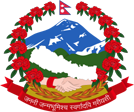
प्रदेश सरकार
पर्यटन, वन तथा वातावरण मन्त्रालय, कोशी प्रदेश, नेपाल.
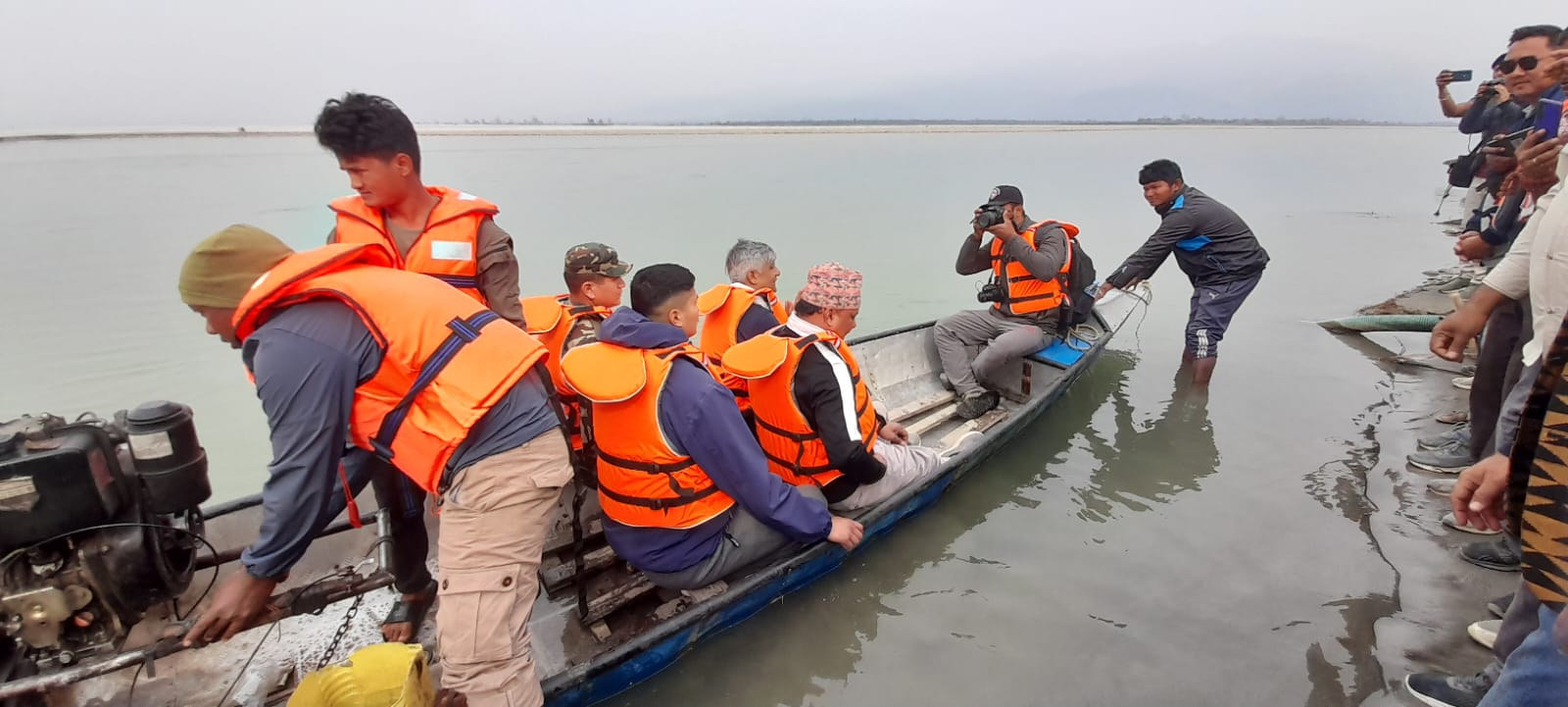
प्रकृति संरक्षण र पर्यटन प्रवर्द्धनका लागि हात्ती प्रभावित क्षेत्रमा पदयात्रा - २०८०

शुभारम्भ समारोह
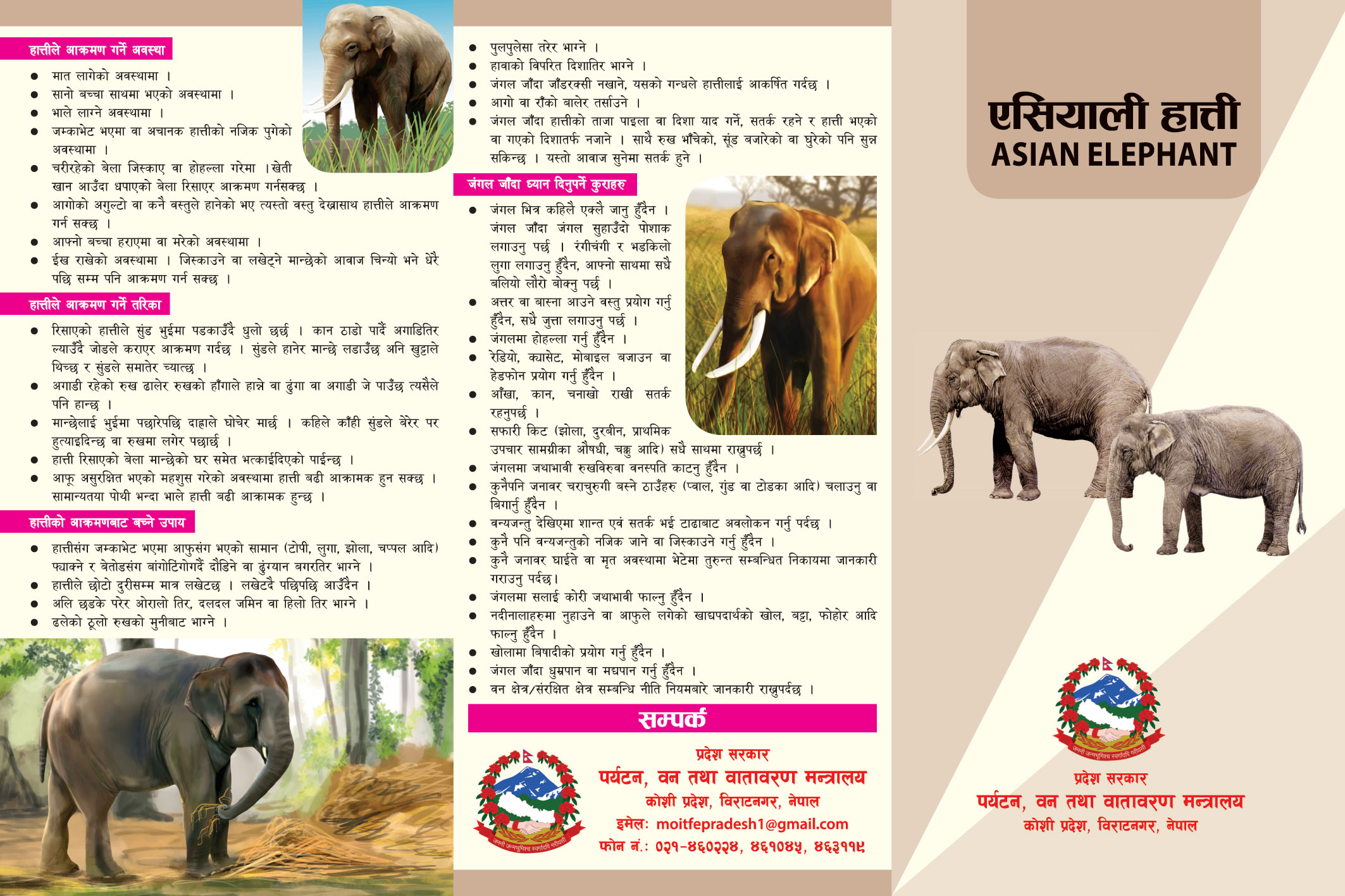
Asian Elephant

प्रस्तावित प्रदेश वन नियमावलीको मस्यौदामा गरिएको व्यवस्थाका सम्बन्धमा सरोकारवालाहरुसँगको छलफल, अन्तरक्रिया तथा पृष्ठपोषण कार्यक्रम
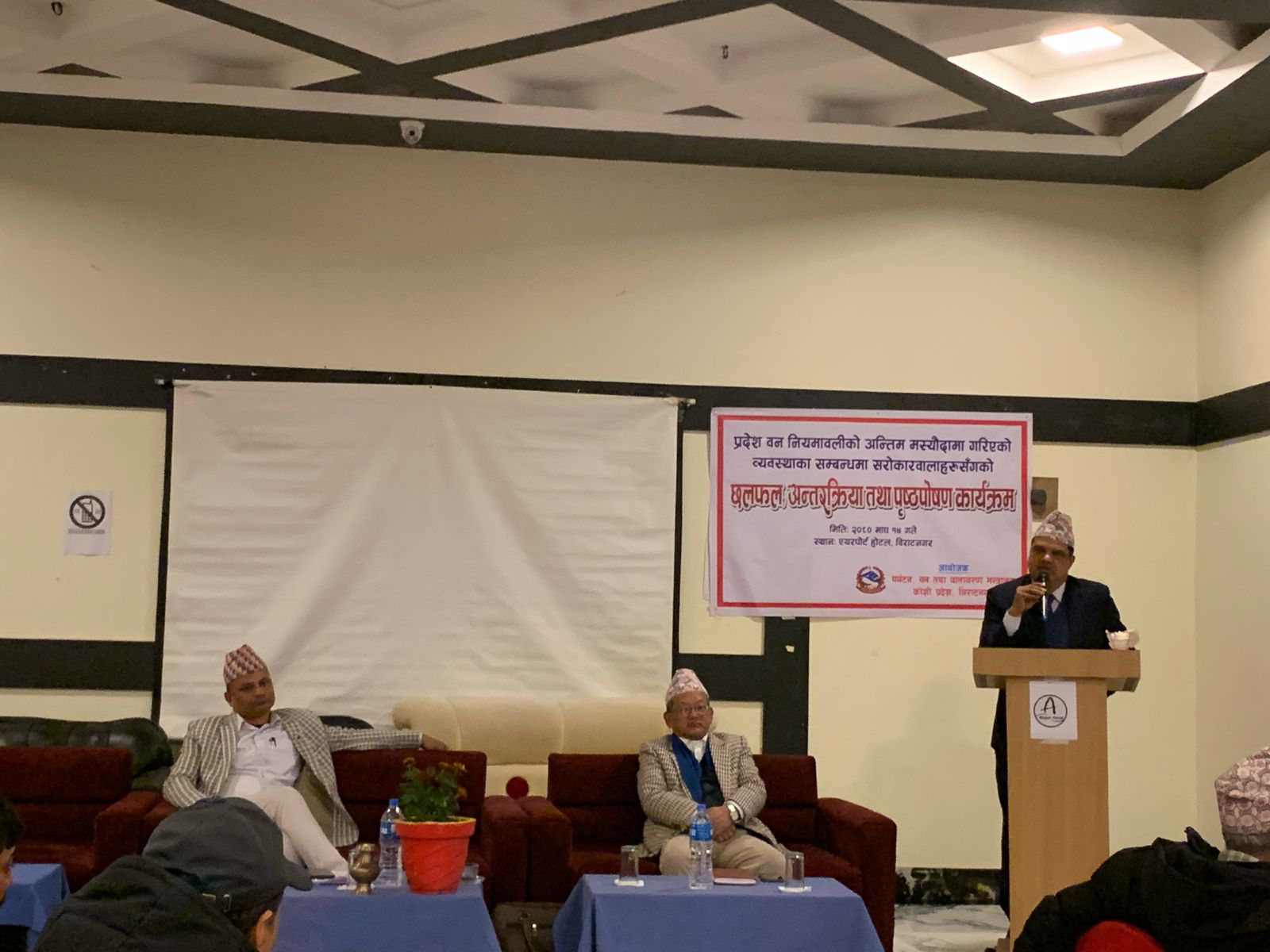
कोशी प्रदेशमा पर्यटन विकासको सम्भावना र चुनौती विषयक संवाद कार्यक्रम
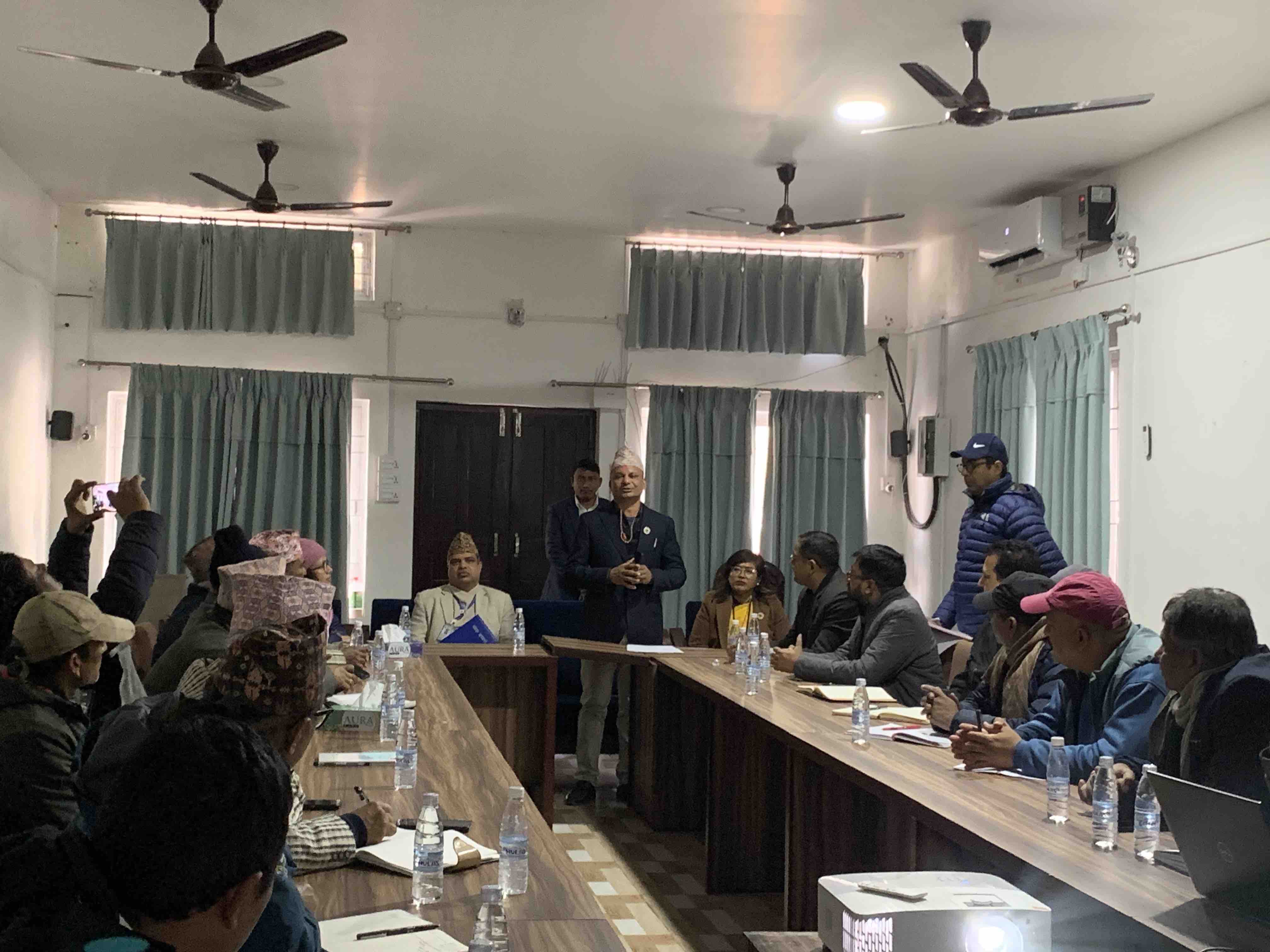
काठको पल्पमा आधारित कागज उद्योग स्थापनाको सम्भावना विषयक एक अन्तरक्रिया कार्यक्रम
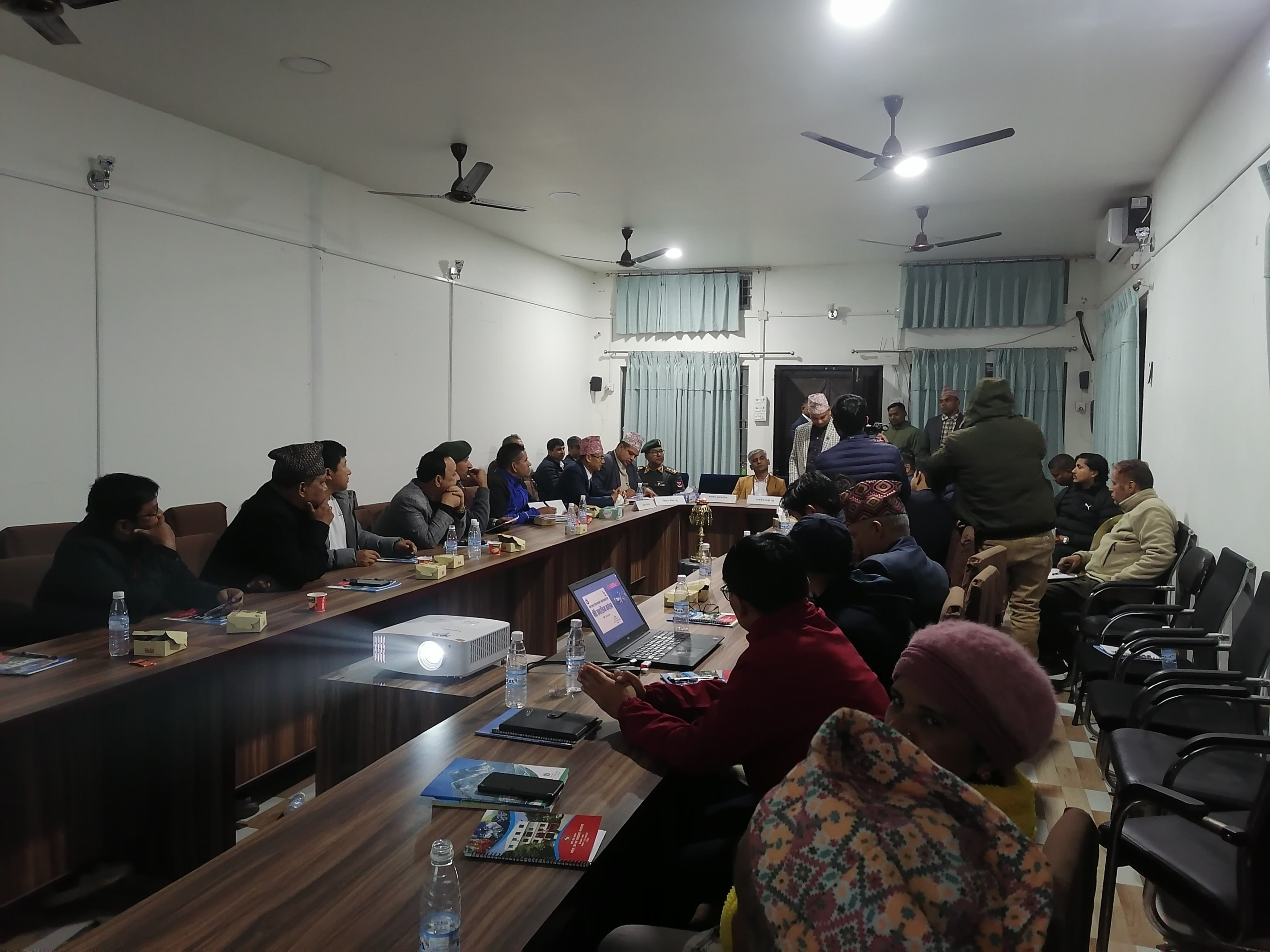
प्रदेश सरकार, पर्यटन व्यवसायी र सरोकारवालाहरु बीच नीति अन्तरक्रिया कार्यक्रम
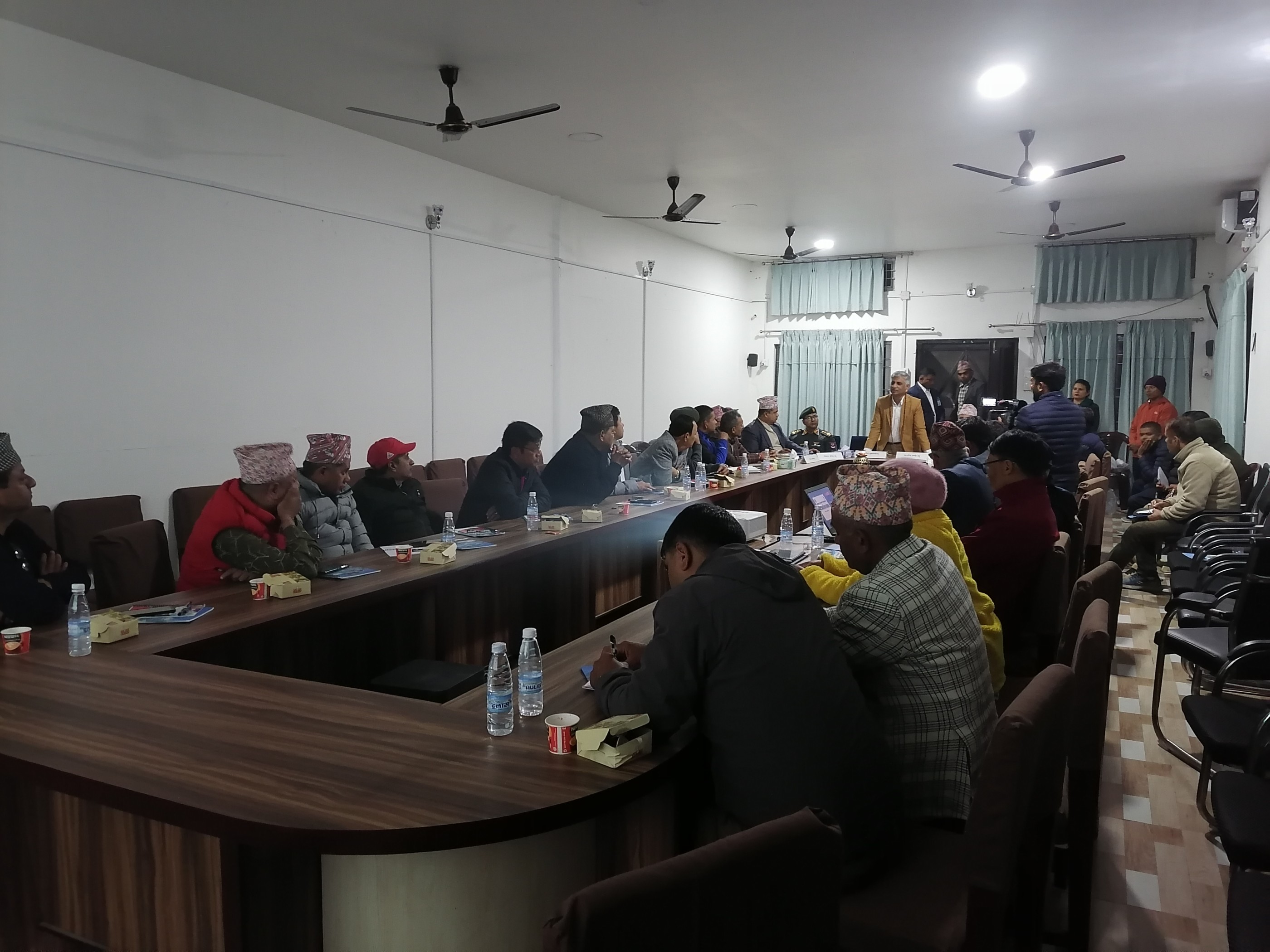
आ.व. २०८०/८१ को पहिलो त्रैमासिकको प्रगति समीक्षा गोष्ठी
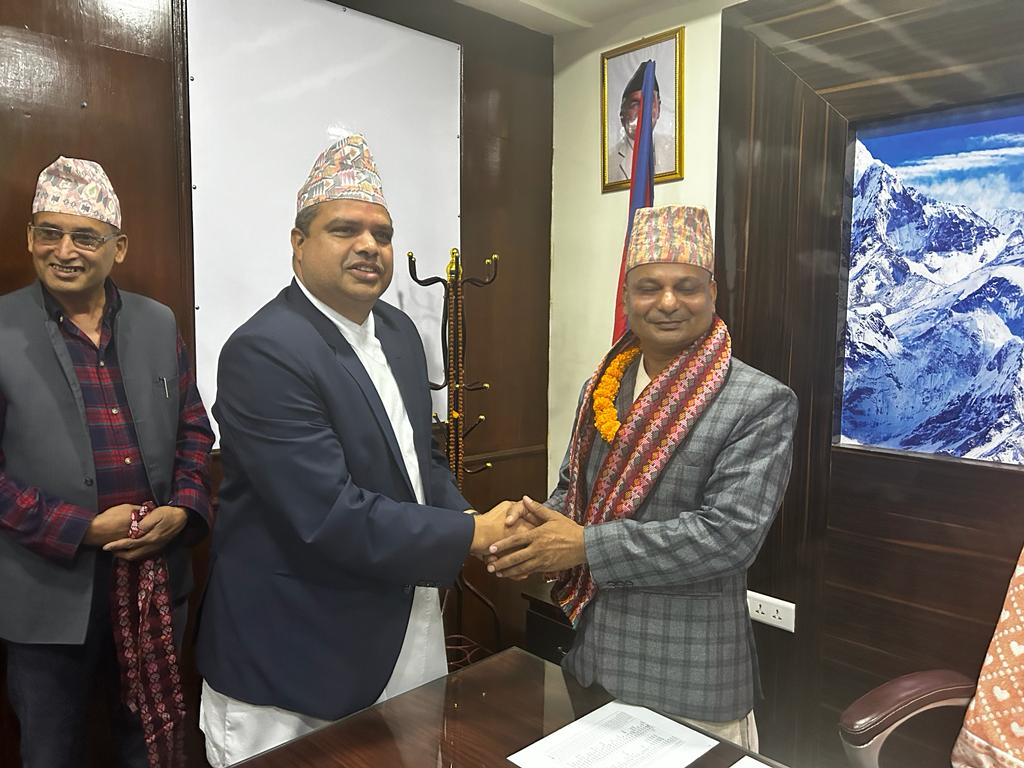
पर्यटन, वन तथा वातावरण मन्त्रालय, कोशी प्रदेश, विराटनगर
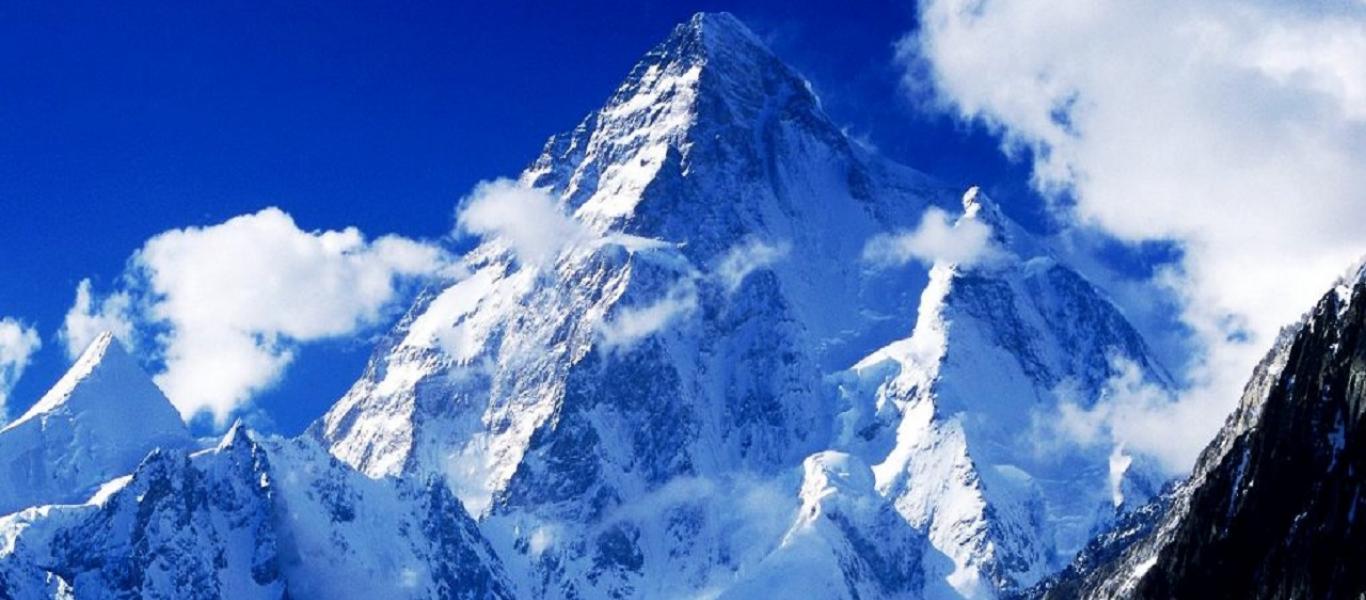
मन्त्रालयको परिचय
- सूचना / प्रेस विज्ञप्ति
तहवृद्धि हुनु भएका कर्मचारीहरुको विवरण "> तहवृद्धि हुनु भएका कर्मचारीहरुको विवरण
प्रदेशस्तरीय होमस्टे सम्मेलन कार्यक्रम २०८० "> प्रदेशस्तरीय होमस्टे सम्मेलन कार्यक्रम २०८०, कोशी प्रदेश वन नियमावली, २०८० "> कोशी प्रदेश वन नियमावली, २०८०, सामुदायिक मा.वि.मा विज्ञान प्रयोगशाला स्थापना सहयोगका लागि प्रदान गरिने आर्थिक अनुदान सम्बन्धी सुचना "> सामुदायिक मा.वि.मा विज्ञान प्रयोगशाला स्थापना सहयोगका लागि प्रदान गरिने आर्थिक अनुदान सम्बन्धी सुचना, औधोगिक मेला संचालन सहयोग सम्बन्धमा प्रस्ताव आव्हानको सूचना "> औधोगिक मेला संचालन सहयोग सम्बन्धमा प्रस्ताव आव्हानको सूचना, धनकुटा औद्योगिक ग्राममा उद्योग राख्न चाहाने उद्दमीले प्रस्ताव पेश गर्ने सम्बन्धमा सूचना। "> धनकुटा औद्योगिक ग्राममा उद्योग राख्न चाहाने उद्दमीले प्रस्ताव पेश गर्ने सम्बन्धमा सूचना।, हाम्रो उद्देश्य, कर्मचारी विवरण, विभाग/कार्यालय, त्रैमासिक प्रगति प्रतिवेदन, वार्षिक प्रतिवेदन, साधारण सूचना.

मा. केदार कार्की
मुख्यमन्त्री तथा पर्यटन, वन तथा वातावरण मन्त्री

विशाल घिमिरे

अखिलेश कुमार गुप्ता

राकेश निरौला
गुनासो सुन्ने अधिकारी
9842047208, 9852030832

सन्तोष मोक्तान
सूचना अधिकारी
Techware Pvt. Ltd.
तस्बिर ग्यालरी
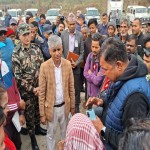

IMAGES
VIDEO
COMMENTS
Short title, extent and commencement: (1) This Act may be called as "Tourism Act, 2035 (1978)". This Act shall extend all over Nepal. The Chapters other than Chapter 4 of this Act shall come into force immediately and Chapter 4 shall come into force on such date as Government. By the Notification Ministry of Tourism and Civil Aviation of dated ...
NEPAL TOURISM STATISTICS 2012.pdf. 26th Aug 20. Notice: आर्थिक वर्ष २०७७ को लागि कार्यालय मसलन्द सामग्री आपूर्ति सम्बन्धि सूचना ...
Tourism plays a vital role in Nepal's economy. In 2007, the number of international tourists visiting Nepal was 526,705, which was an increase of 37.2% compared to the previous year. In 2008, the number of tourists decreased by 5% to 500,277. In 2018, the number of international tourists arrival was 1.17 million.
Kathmandu. Nepal on Thursday threw away the seven-day quarantine requirement and resumed issuing on-arrival visas to all vaccinated foreign travellers in a bid to bring its virus-ravaged tourism industry back to life. Visitors should have received their last dose of Covid-19 vaccine at least 14 full days prior to entering Nepal.
Nepal Tourism Board is a national tourism organization of Nepal established in 1998 by an Act of Parliament in the form of partnership between the Government of Nepal and private sector tourism industry to develop and market Nepal as an attractive tourist destination. The Board provides platform for vision-drawn leadership for Nepal's tourism ...
KATHMANDU, August 31:Minister of Culture, Tourism and Civil Aviation, Sudan Kirati, has said that they are preparing to amend the Tourism Act. On Monday, he stated that plans are being made to change the Tourism Act 2035 while speaking at a session of the Nepal Mountaineering Association. The current l…
Meanwhile on 1999, Nepal Tourism Board was established as per the Nepal Tourism Board Act, which carries the spirit of public-private partnership modality and serves as a strategic think-tank Evaluating the progress and impacts of Strategic document such as Tourism Vision 2020 and Nepal Tourism Strategic Plan 2016-2025, streamlined ...
Nepal Tourism Board is a national tourism organization of Nepal established in 1998 by an Act of Parliament in the form of partnership between the Government of Nepal and private sector tourism industry to develop and market Nepal as an attractive tourist destination. The Board provides platform for vision-drawn leadership for Nepal's tourism ...
expansion and pr omotion of tourism in N epal (Nepal T ourism Board Act, 1997). T ourism Act (1978) and T ourism Policy (2008) constit ute legal foundation for the .
Nepal Tourism Board Rules, 2055 (1999). This Act provides for the establishment of the Nepal Tourism Board to develop, expand and promote tourism business in Nepal whilst protecting and promoting natural and cultural heritage and the environment of the country.
Tourism Act 2035: Download: 2. THE immigration Act: Download: 3. औद्योगिक व्यवसाय ऐन, २०४९ ... Ministry of Culture,Tourism & Civil Aviation,Nepal. Tweets by Ministry of Culture,Tourism & Civil Aviation,Nepal. सम्पर्क विवरण ...
The Act defines the Board s internal organization and its functions, powers and duties including: to act as the representative of the Government of Nepal for carrying out any activities related to tourism; to develop Nepal as an attractive tourist destination; to motivate private sector for the sightseeing of religious and culturally important ...
Nepal Tourism Board is a national tourism organization of Nepal established in 1998 by an Act of Parliament in the form of partnership between the Government of Nepal and private sector tourism industry to develop and market Nepal as an attractive tourist destination. The Board provides platform for vision-drawn leadership for Nepal's tourism ...
ABSTRACT. W elcoming two million tourists in 2020, is itself a challenge and. the challenge from another side is a great opportunity for Nepalese tourism. development. Only tourism can transform ...
संस्कृति, पर्यटन तथा नागरिक उड्डयन मन्त्रालय. लिलाम बिक्री सम्बन्धी सूचना :-२०८०/८१. NEPAL TOURISM STATISTICS 2023 Final Report. थप हेर्नुहोस्. माननीय ...
Bring the World to Nepal by enabling NRNs to develop, multiply, and act as Nepal's tourism outreach ambassadors and key influencers. Designating them as Tourism Brand Ambassadors. Letting them know their doable responsibilities and authorities. Empowering them and providing tools and trainings. Focus Goals:
destination. However, the planned tourism development efforts in Nepal started only in 1972 with the formulation of first tourism master plan which was also called German Master Plan and subsequently Tourism Act 1978. The concept of community-based ecotourism was initiated in late 1980s with the piloting
1. Short Title and Commencement: (1) These Rules may be called the "Nepal Tourism Board Rules, 2055 (1999)" (2) These Rules shall come into force immediately. 2. Definition: unless the subject or context otherwise requires, in these Rules, (a) "Act" means the Nepal Tourism Board Act, 2053 (1997)."Tourism entrepreneurs" means a ...
A qualitative framework has been adopted of an in-depth interview with leading entrepreneurial personalities of the tourism industry of Nepal. Representing hospitality, catering, trekking, and travel with at least 20 years of experience in tourism-related activities are considered as the true representation to collect primary data. Manual ...
Nepal Tourism Board Act, 2053: 190: Nepal Trust Act, 2064 (2008) 191: Nepal Water Supply Corporation Act, 2046 (1989) 192: Administration of Justice Act, 2073 (2016) 193: An Act to Regulate and Control International Trade in Endangered Wild Fauna and Flora: 194: Employee Provident Fund Act, 2019 (1962) 195:
quality in tourism and hospitality services by providing craft and supervisory level skill-oriented trainings. 1973 Chitwan National Park, the first national park in Nepal, was established. 1978 Tourism Act 2035 was enacted and Ministry of Tourism was established. 1979 Trekking Agencies‟ Association of Nepal (TAAN) was established to devise ...
प्रदेश सरकार पर्यटन, वन तथा वातावरण मन्त्रालय कोशी प्रदेश, नेपाल
4. Administration of Justice Act, 2048 2048/2/16 (June 30, 1991) 5. Republic Strengthening and Some Nepal Laws Amendment Act, 2066 2066/10/7 (Jan. 21, 2010) Act Number 54 of 2019 (1963) An Act to amend and consolidate the Nepal airline Act Preamble : Whereas it is expedient to amend and consolidate the Nepal Airlines Act,